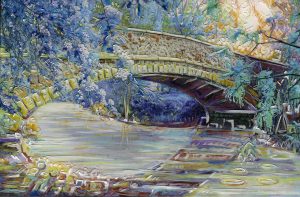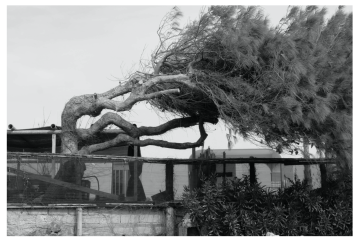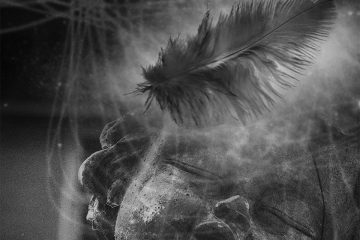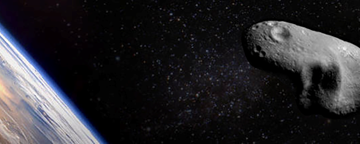The Power of EMPATHY and the Inspirational Moment

When recording his revolutionary score for the film Ascenseur pour l’échafaud, Miles Davis immersed himself so completely in the characters’ lives that he ‘became’ the person on the screen. Recording live and without written notes, he let the powerful imagery guide his improvisation. The result not only redefined film scoring but also laid the foundation for much of modern jazz.
The phenomenon of being ‘in the moment’ is a universal human experience, yet it holds particular significance for artists, composers, and musicians in their creative processes. They somehow become completely connected to the subject matter at hand. Their inspiration seems then to stream out of a hidden source. The path to achieving spontaneous creativity is individual. Some need to retreat into a closed environment to become attuned to themselves and their ‘inner voice’; others are best off improvising, for example, on the dance floor in a loud and distracting space. What all these inspirational moments have in common is the feeling of being ‘in the flow’: that time and space are irrelevant—just the immediacy of the moment matters.
I often wonder if inspiration is more than a mental process—if it taps into a deeper connection beyond ourselves. The ancient philosophy of Vedanta teaches that all beings are interconnected. Beings may live and walk about like you and me, but beings may also exist in other forms. For this discussion, I define ‘beings’ as individuals or collectives sharing a joint consciousness and acting as unique entities. If all beings are somehow connected, could empathy be the glue connecting us? Is empathy a type of resonance resounding on the strings connecting all of us?
This idea is far from trivial. As we know from the science of quantum mechanics, connections do exist between entities regardless of the time or space between them. Could the strong emotions that one person spontaneously feels for another be a reflection of a bond that really does exist? When an animal lies injured on the ground, do we not all ‘feel’ for that animal, for that being? Can a tree call out to us and tell us his/her story?
Much of our upbringing is designed to lay out patterns of behavior for our actions. Like notes written on a musical scale, we are taught to read the directions and perform in a specific—predetermined—way. If we leave the notes aside and find our own space for expression, do we not also follow some preordained tune? Or rather, are we not then the composer ourselves?
As an artist, I personally need to reduce the impulses around me in order to find that ‘concentrated space’ that allows me to be creative. Moreover, I experience a form of ‘connectivity’ that I cannot—and need not—describe. In my current series, The Being of Trees, I create portraits of real trees from around the world. I let the flow of inspiration guide the design and evolution of each piece. In those moments, I feel a profound connection to the tree themself. For me, this bond is real, and it is rooted in empathy.
Ultimately, like all artists, my aim is to inspire others to see the world differently. An enigmatic painting of a dramatic tree can evoke an emotional response in the viewer. Perhaps this response leads to tangible change; sparing a tree, leaving flowers to bloom, planting wildflowers, or rethinking the pristine, weed-free lawn.
In this case, a fortuitous chain of events takes place. The beauty and personality of the tree move me, guiding my emotions into a painted form. The viewer of the finished piece is touched in turn by a statement in the work which triggers again an empathetic emotional response in the viewer. This person then saves a tree and tells others about their experience.
Empathy is the ability to feel and understand the emotions and thoughts of another. What empathy and the inspirational moment share is a deep connection to the subtle energies that bind us all. As an artist, I strive to awake the power of empathy for nature and the world around us. Can the patina of an old stone wall or a rusty structured bridge tell us a story? Can a tree inspire us to care for our environment and heal the world around us? I believe we can connect with the essence of things—past and present—in dimensions that transcend the day-to-day. By learning to ‘connect and receive,’ we can shape a more empathetic and harmonious future.
#
David, born in Boston, USA, developed an enduring interest in international cultures and affairs during his studies at Brown University, which inspired him to study and work abroad. As a young professional, he relocated to Düsseldorf, Germany, where he built a successful career with one of the country’s largest financial institutions. In his role as Head of Group Marketing, David traveled extensively, finding fulfillment in modernizing the institution’s communication and design strategies while fostering collaborations with people from around the world.
Driven by a profound inner calling, David eventually left the financial sector to pursue more meaningful, “heart-centered” work. He trained as a yoga teacher and embraced his lifelong passion for painting and the communicative arts. Today, David is a recognized artist and yoga instructor in the Rhine Valley region. His recent art series, The Being of Trees, has been exhibited in local galleries and most recently in the Koenraad Bosman Museum in Rees, NRW. Through his art, David gives voice to the lives and emotions of trees from around the globe, aiming to deepen humanity’s empathy for nature.
Counterpoint blogs may be reprinted with the following acknowledgement: “This article was published by Counterpoint Navigating Knowledge on 18 December 2024.” The views and opinions expressed on this website, in its publications, and in comments made in response to the site and publications are those of the author(s) and do not necessarily reflect the views and opinions of Counterpoint: Navigating Knowledge, its founders, its staff, or any agent or institution affiliated with it, nor those of the institution(s) with which the author is affiliated. Counterpoint exists to promote vigorous debate within and across knowledge systems and therefore publishes a wide variety of views and opinions in the interests of open conversation and dialogue.
Image credits: “Au-Brücke in Amöneburg (Hessen),” from the series “Die Seele der Brücken,” Mixed Media under synthetic resin from 2015 © David R. Hawkins.




2 Comments
Jutta · December 18, 2024 at 12:52 PM
Wie wahr, lieber David! Danke für deine Inspiration.
Susanne Magdalena Karr · December 18, 2024 at 1:47 PM
Thank you for this beautiful display of empathy and connectedness – the qualities we need more of in an inspired plan to change destructive dynamics.